Quick filters:
Coolies south africa Stock Photos and Images
 Group of Indian coolies, South Africa, c1890. Artist: Unknown Stock Photohttps://www.alamy.com/image-license-details/?v=1https://www.alamy.com/group-of-indian-coolies-south-africa-c1890-artist-unknown-image262769951.html
Group of Indian coolies, South Africa, c1890. Artist: Unknown Stock Photohttps://www.alamy.com/image-license-details/?v=1https://www.alamy.com/group-of-indian-coolies-south-africa-c1890-artist-unknown-image262769951.htmlRMW7E5N3–Group of Indian coolies, South Africa, c1890. Artist: Unknown
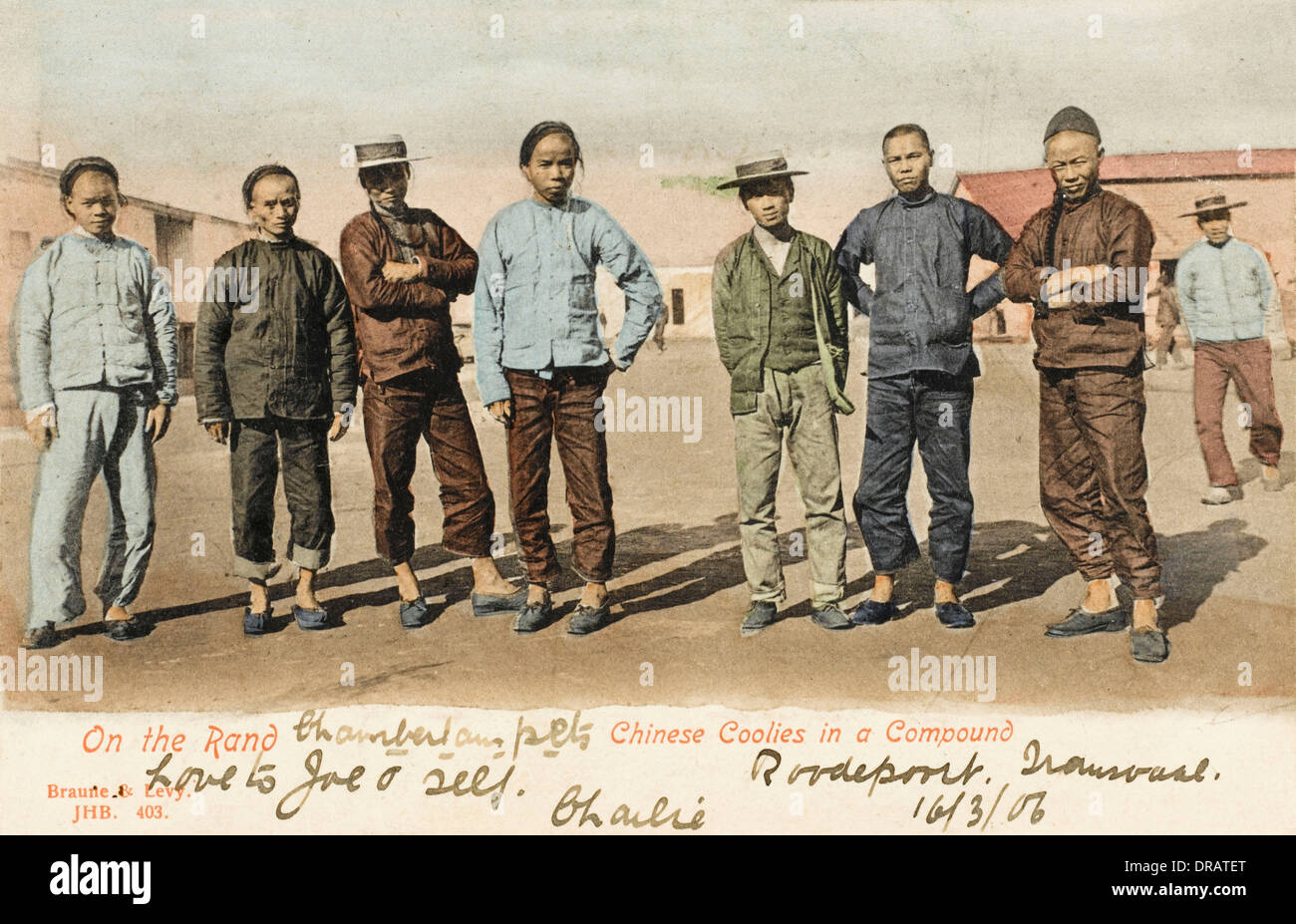 South Africa - Transvaal - Chinese Coolies in a Compound Stock Photohttps://www.alamy.com/image-license-details/?v=1https://www.alamy.com/south-africa-transvaal-chinese-coolies-in-a-compound-image66006944.html
South Africa - Transvaal - Chinese Coolies in a Compound Stock Photohttps://www.alamy.com/image-license-details/?v=1https://www.alamy.com/south-africa-transvaal-chinese-coolies-in-a-compound-image66006944.htmlRMDRATET–South Africa - Transvaal - Chinese Coolies in a Compound
 Tea Farm, showing Coolies Picking from the book ' South Africa and the Transvaal war ' by Louis Creswicke, Publisher; Edinburgh : T. C. & E. C. Jack 1900 Stock Photohttps://www.alamy.com/image-license-details/?v=1https://www.alamy.com/tea-farm-showing-coolies-picking-from-the-book-south-africa-and-the-transvaal-war-by-louis-creswicke-publisher-edinburgh-t-c-e-c-jack-1900-image465305819.html
Tea Farm, showing Coolies Picking from the book ' South Africa and the Transvaal war ' by Louis Creswicke, Publisher; Edinburgh : T. C. & E. C. Jack 1900 Stock Photohttps://www.alamy.com/image-license-details/?v=1https://www.alamy.com/tea-farm-showing-coolies-picking-from-the-book-south-africa-and-the-transvaal-war-by-louis-creswicke-publisher-edinburgh-t-c-e-c-jack-1900-image465305819.htmlRF2J10E8Y–Tea Farm, showing Coolies Picking from the book ' South Africa and the Transvaal war ' by Louis Creswicke, Publisher; Edinburgh : T. C. & E. C. Jack 1900
 Chinese 'Coolies' leaving South Africa, 1907. Stock Photohttps://www.alamy.com/image-license-details/?v=1https://www.alamy.com/chinese-coolies-leaving-south-africa-1907-image501362990.html
Chinese 'Coolies' leaving South Africa, 1907. Stock Photohttps://www.alamy.com/image-license-details/?v=1https://www.alamy.com/chinese-coolies-leaving-south-africa-1907-image501362990.htmlRM2M3K1H2–Chinese 'Coolies' leaving South Africa, 1907.
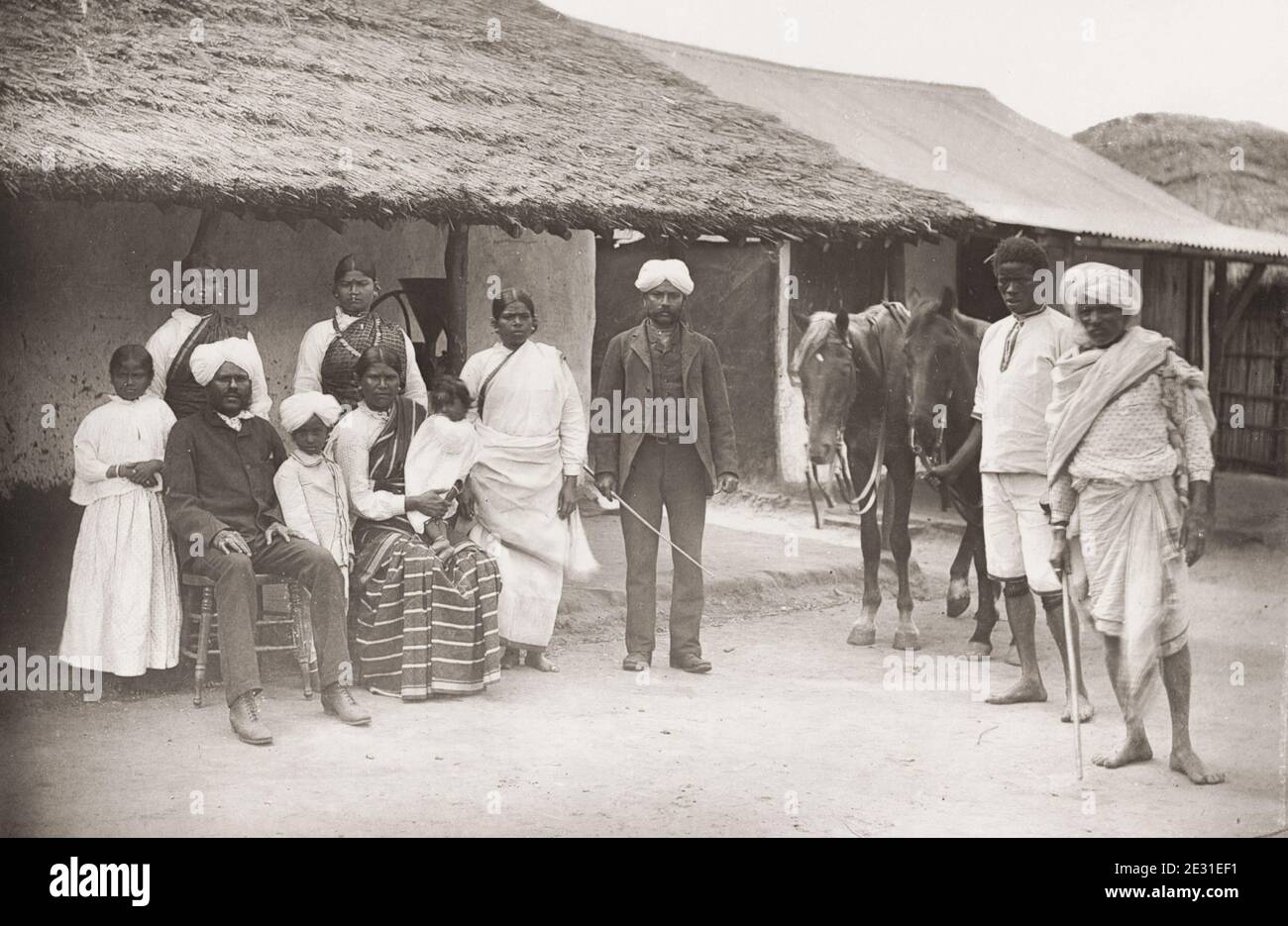 Vintage 19th century photograph: captioned 'Group of Coolies' family of Indian workers, South Africa. Stock Photohttps://www.alamy.com/image-license-details/?v=1https://www.alamy.com/vintage-19th-century-photograph-captioned-group-of-coolies-family-of-indian-workers-south-africa-image397715781.html
Vintage 19th century photograph: captioned 'Group of Coolies' family of Indian workers, South Africa. Stock Photohttps://www.alamy.com/image-license-details/?v=1https://www.alamy.com/vintage-19th-century-photograph-captioned-group-of-coolies-family-of-indian-workers-south-africa-image397715781.htmlRM2E31EF1–Vintage 19th century photograph: captioned 'Group of Coolies' family of Indian workers, South Africa.
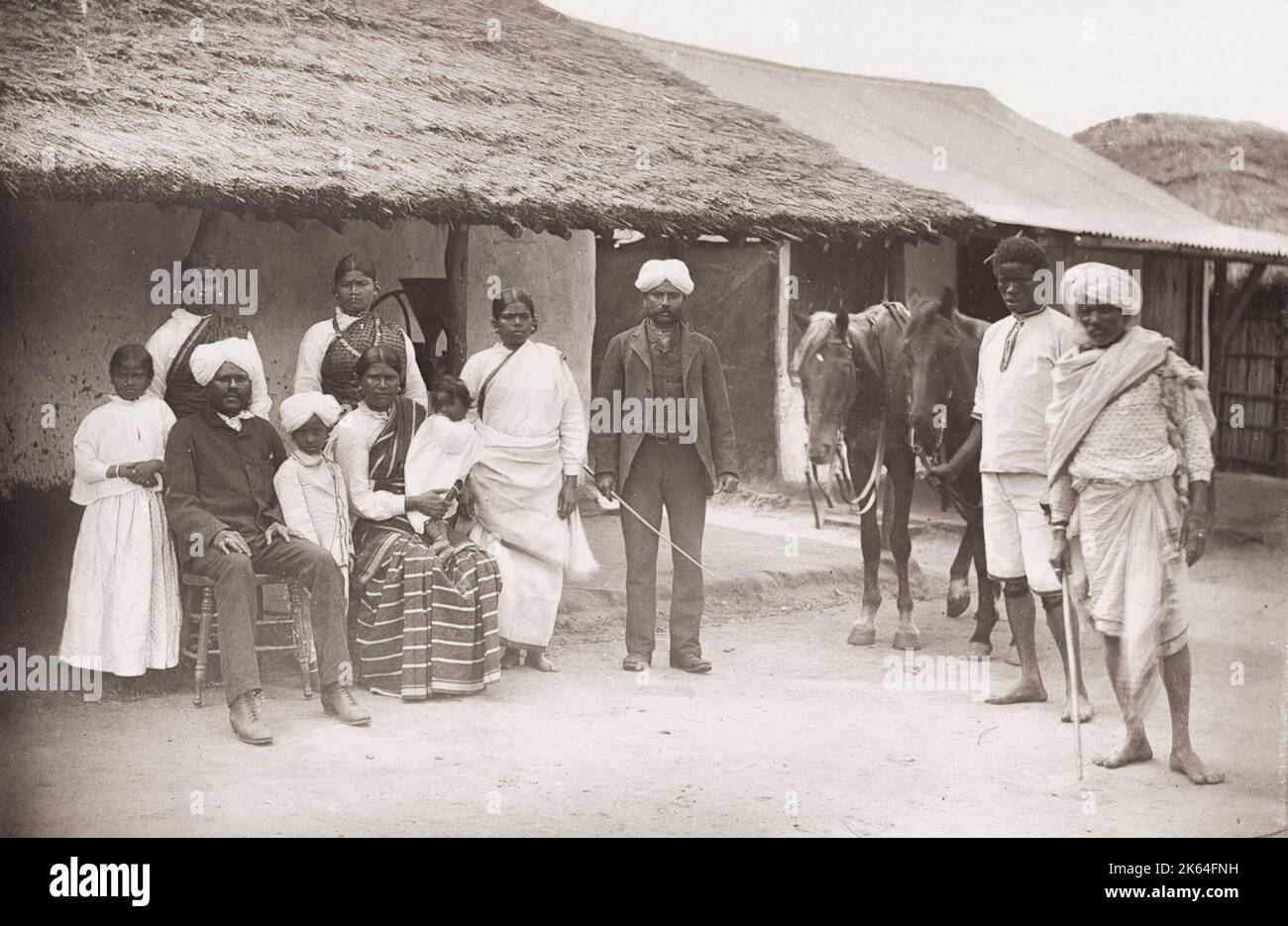 Vintage 19th century photograph: captioned 'Group of Coolies' family of Indian workers, South Africa. Stock Photohttps://www.alamy.com/image-license-details/?v=1https://www.alamy.com/vintage-19th-century-photograph-captioned-group-of-coolies-family-of-indian-workers-south-africa-image485678413.html
Vintage 19th century photograph: captioned 'Group of Coolies' family of Indian workers, South Africa. Stock Photohttps://www.alamy.com/image-license-details/?v=1https://www.alamy.com/vintage-19th-century-photograph-captioned-group-of-coolies-family-of-indian-workers-south-africa-image485678413.htmlRM2K64FNH–Vintage 19th century photograph: captioned 'Group of Coolies' family of Indian workers, South Africa.
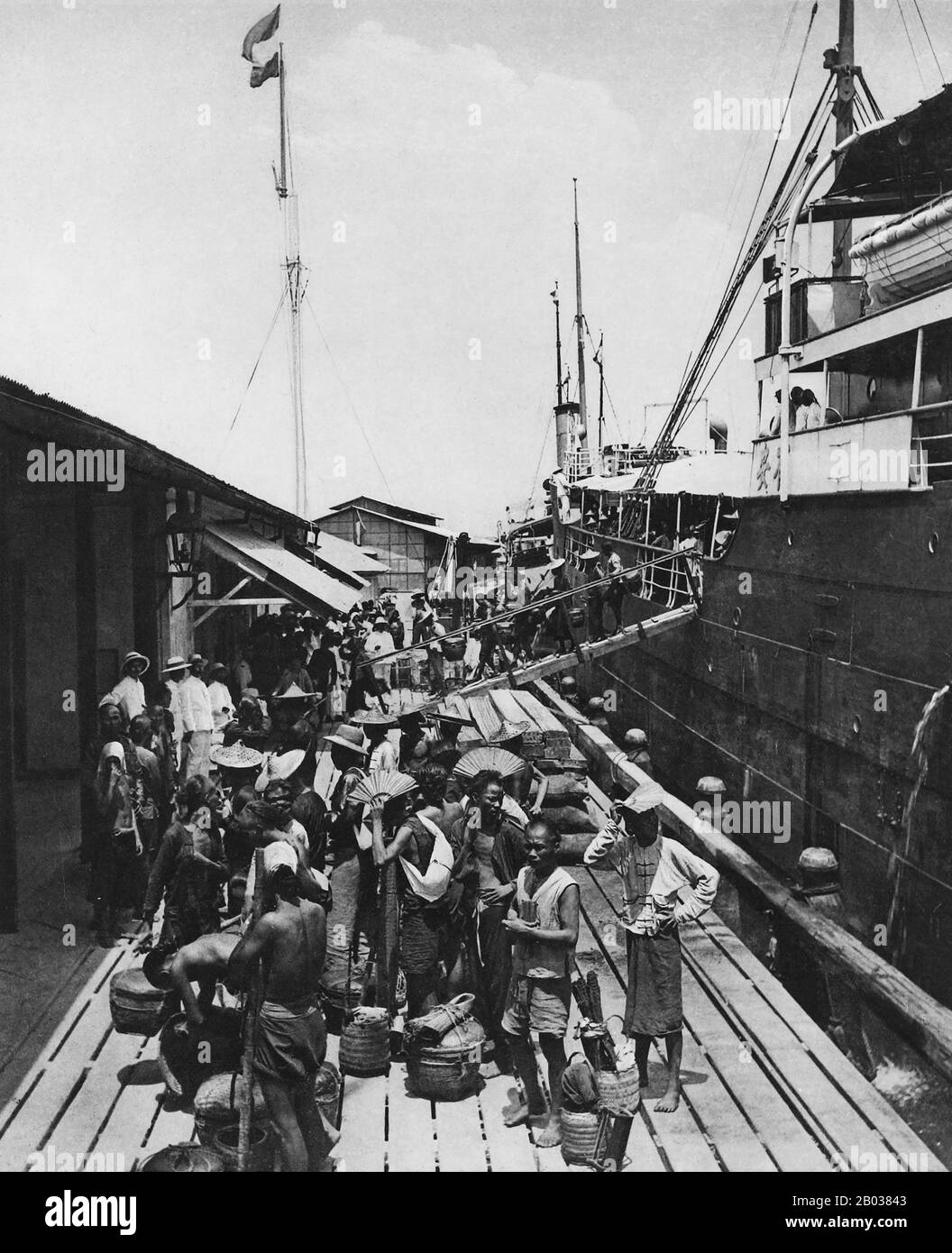 Waves of Chinese emigration have happened throughout history. The mass emigration known as the Chinese diaspora, which occurred from the 19th century to 1949, was mainly caused by wars and starvation in mainland China, invasion from various foreign countries, as well as the problems resulting from political corruption. Most immigrants were illiterate peasants and manual labourers, called 'coolies', who emigrated to work in places such as the Americas, Australia, South Africa, and Southeast Asia. Stock Photohttps://www.alamy.com/image-license-details/?v=1https://www.alamy.com/waves-of-chinese-emigration-have-happened-throughout-history-the-mass-emigration-known-as-the-chinese-diaspora-which-occurred-from-the-19th-century-to-1949-was-mainly-caused-by-wars-and-starvation-in-mainland-china-invasion-from-various-foreign-countries-as-well-as-the-problems-resulting-from-political-corruption-most-immigrants-were-illiterate-peasants-and-manual-labourers-called-coolies-who-emigrated-to-work-in-places-such-as-the-americas-australia-south-africa-and-southeast-asia-image344279603.html
Waves of Chinese emigration have happened throughout history. The mass emigration known as the Chinese diaspora, which occurred from the 19th century to 1949, was mainly caused by wars and starvation in mainland China, invasion from various foreign countries, as well as the problems resulting from political corruption. Most immigrants were illiterate peasants and manual labourers, called 'coolies', who emigrated to work in places such as the Americas, Australia, South Africa, and Southeast Asia. Stock Photohttps://www.alamy.com/image-license-details/?v=1https://www.alamy.com/waves-of-chinese-emigration-have-happened-throughout-history-the-mass-emigration-known-as-the-chinese-diaspora-which-occurred-from-the-19th-century-to-1949-was-mainly-caused-by-wars-and-starvation-in-mainland-china-invasion-from-various-foreign-countries-as-well-as-the-problems-resulting-from-political-corruption-most-immigrants-were-illiterate-peasants-and-manual-labourers-called-coolies-who-emigrated-to-work-in-places-such-as-the-americas-australia-south-africa-and-southeast-asia-image344279603.htmlRM2B03843–Waves of Chinese emigration have happened throughout history. The mass emigration known as the Chinese diaspora, which occurred from the 19th century to 1949, was mainly caused by wars and starvation in mainland China, invasion from various foreign countries, as well as the problems resulting from political corruption. Most immigrants were illiterate peasants and manual labourers, called 'coolies', who emigrated to work in places such as the Americas, Australia, South Africa, and Southeast Asia.
 Chinese Musicians - one playing an Erhu - South Africa Stock Photohttps://www.alamy.com/image-license-details/?v=1https://www.alamy.com/stock-photo-chinese-musicians-one-playing-an-erhu-south-africa-105386429.html
Chinese Musicians - one playing an Erhu - South Africa Stock Photohttps://www.alamy.com/image-license-details/?v=1https://www.alamy.com/stock-photo-chinese-musicians-one-playing-an-erhu-south-africa-105386429.htmlRMG3CND1–Chinese Musicians - one playing an Erhu - South Africa
 Waves of Chinese emigration have happened throughout history. The mass emigration known as the Chinese diaspora, which occurred from the 19th century to 1949, was mainly caused by wars and starvation in mainland China, invasion from various foreign countries, as well as the problems resulting from political corruption. Most immigrants were illiterate peasants and manual labourers, called 'coolies', who emigrated to work in places such as the Americas, Australia, South Africa, and Southeast Asia. Stock Photohttps://www.alamy.com/image-license-details/?v=1https://www.alamy.com/waves-of-chinese-emigration-have-happened-throughout-history-the-mass-emigration-known-as-the-chinese-diaspora-which-occurred-from-the-19th-century-to-1949-was-mainly-caused-by-wars-and-starvation-in-mainland-china-invasion-from-various-foreign-countries-as-well-as-the-problems-resulting-from-political-corruption-most-immigrants-were-illiterate-peasants-and-manual-labourers-called-coolies-who-emigrated-to-work-in-places-such-as-the-americas-australia-south-africa-and-southeast-asia-image344279604.html
Waves of Chinese emigration have happened throughout history. The mass emigration known as the Chinese diaspora, which occurred from the 19th century to 1949, was mainly caused by wars and starvation in mainland China, invasion from various foreign countries, as well as the problems resulting from political corruption. Most immigrants were illiterate peasants and manual labourers, called 'coolies', who emigrated to work in places such as the Americas, Australia, South Africa, and Southeast Asia. Stock Photohttps://www.alamy.com/image-license-details/?v=1https://www.alamy.com/waves-of-chinese-emigration-have-happened-throughout-history-the-mass-emigration-known-as-the-chinese-diaspora-which-occurred-from-the-19th-century-to-1949-was-mainly-caused-by-wars-and-starvation-in-mainland-china-invasion-from-various-foreign-countries-as-well-as-the-problems-resulting-from-political-corruption-most-immigrants-were-illiterate-peasants-and-manual-labourers-called-coolies-who-emigrated-to-work-in-places-such-as-the-americas-australia-south-africa-and-southeast-asia-image344279604.htmlRM2B03844–Waves of Chinese emigration have happened throughout history. The mass emigration known as the Chinese diaspora, which occurred from the 19th century to 1949, was mainly caused by wars and starvation in mainland China, invasion from various foreign countries, as well as the problems resulting from political corruption. Most immigrants were illiterate peasants and manual labourers, called 'coolies', who emigrated to work in places such as the Americas, Australia, South Africa, and Southeast Asia.
 Coolies ( Indians) working in a sugar cane field South Africa 1913 Stock Photohttps://www.alamy.com/image-license-details/?v=1https://www.alamy.com/coolies-indians-working-in-a-sugar-cane-field-south-africa-1913-image624209708.html
Coolies ( Indians) working in a sugar cane field South Africa 1913 Stock Photohttps://www.alamy.com/image-license-details/?v=1https://www.alamy.com/coolies-indians-working-in-a-sugar-cane-field-south-africa-1913-image624209708.htmlRM2Y7F5RT–Coolies ( Indians) working in a sugar cane field South Africa 1913
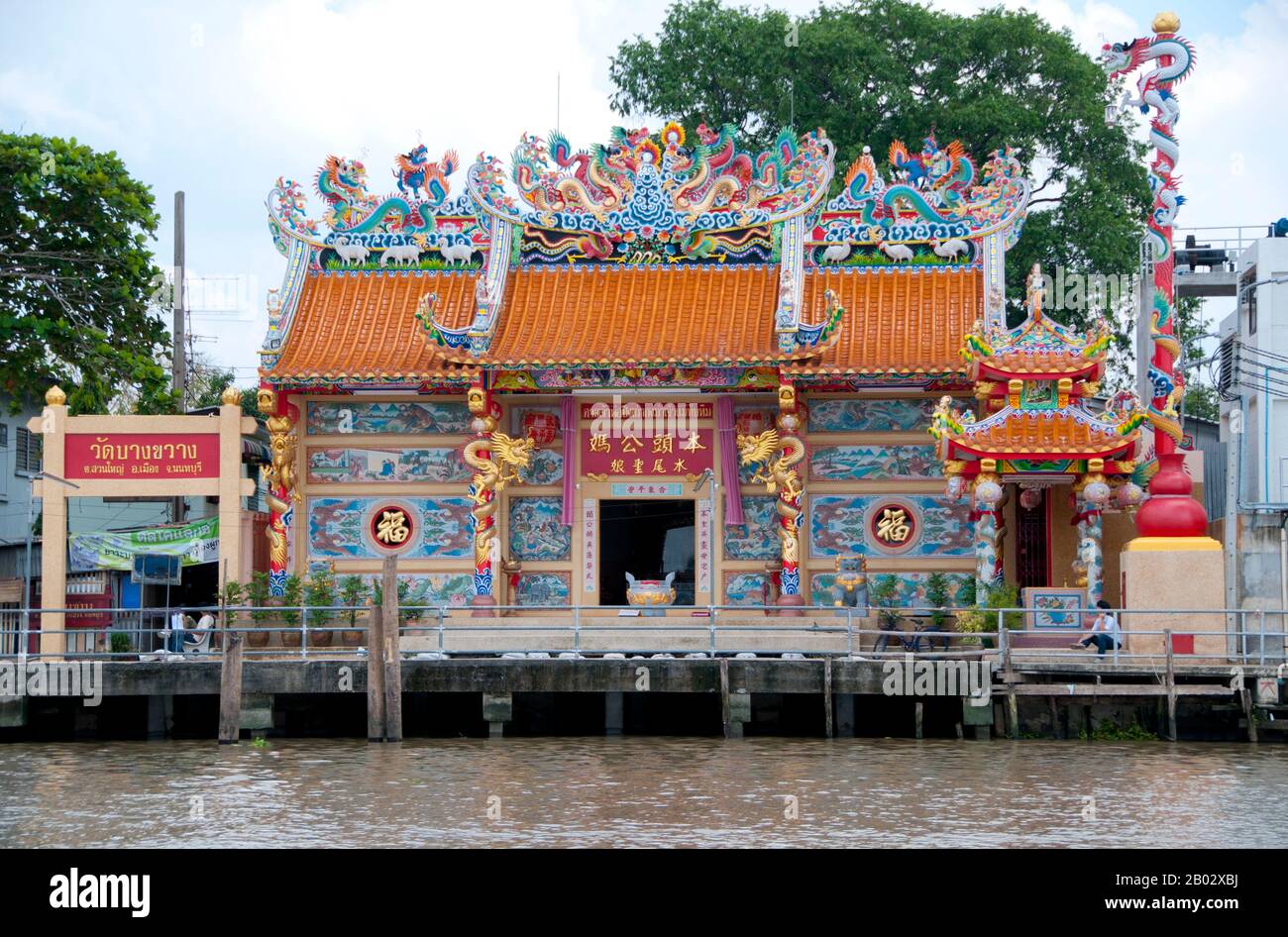 By the 19th century, with the introduction of cheap steamship travel and declining conditions in China itself, a steady trickle of Chinese migrants to Thailand became a flood. Chinese coolies (from the Chinese ku-li, or 'bitter labour') sought new lives and a higher standard of living throughout Southeast Asia and beyond - even in distant California, Southern Africa and South America. It is from this time that the term 'Overseas Chinese' becomes common, though in the case of Thailand, Burma, Laos and Vietnam it is misleading. Here there are many 'Overland Chinese' as well. As a result of this Stock Photohttps://www.alamy.com/image-license-details/?v=1https://www.alamy.com/by-the-19th-century-with-the-introduction-of-cheap-steamship-travel-and-declining-conditions-in-china-itself-a-steady-trickle-of-chinese-migrants-to-thailand-became-a-flood-chinese-coolies-from-the-chinese-ku-li-or-bitter-labour-sought-new-lives-and-a-higher-standard-of-living-throughout-southeast-asia-and-beyond-even-in-distant-california-southern-africa-and-south-america-it-is-from-this-time-that-the-term-overseas-chinese-becomes-common-though-in-the-case-of-thailand-burma-laos-and-vietnam-it-is-misleading-here-there-are-many-overland-chinese-as-well-as-a-result-of-this-image344271974.html
By the 19th century, with the introduction of cheap steamship travel and declining conditions in China itself, a steady trickle of Chinese migrants to Thailand became a flood. Chinese coolies (from the Chinese ku-li, or 'bitter labour') sought new lives and a higher standard of living throughout Southeast Asia and beyond - even in distant California, Southern Africa and South America. It is from this time that the term 'Overseas Chinese' becomes common, though in the case of Thailand, Burma, Laos and Vietnam it is misleading. Here there are many 'Overland Chinese' as well. As a result of this Stock Photohttps://www.alamy.com/image-license-details/?v=1https://www.alamy.com/by-the-19th-century-with-the-introduction-of-cheap-steamship-travel-and-declining-conditions-in-china-itself-a-steady-trickle-of-chinese-migrants-to-thailand-became-a-flood-chinese-coolies-from-the-chinese-ku-li-or-bitter-labour-sought-new-lives-and-a-higher-standard-of-living-throughout-southeast-asia-and-beyond-even-in-distant-california-southern-africa-and-south-america-it-is-from-this-time-that-the-term-overseas-chinese-becomes-common-though-in-the-case-of-thailand-burma-laos-and-vietnam-it-is-misleading-here-there-are-many-overland-chinese-as-well-as-a-result-of-this-image344271974.htmlRM2B02XBJ–By the 19th century, with the introduction of cheap steamship travel and declining conditions in China itself, a steady trickle of Chinese migrants to Thailand became a flood. Chinese coolies (from the Chinese ku-li, or 'bitter labour') sought new lives and a higher standard of living throughout Southeast Asia and beyond - even in distant California, Southern Africa and South America. It is from this time that the term 'Overseas Chinese' becomes common, though in the case of Thailand, Burma, Laos and Vietnam it is misleading. Here there are many 'Overland Chinese' as well. As a result of this
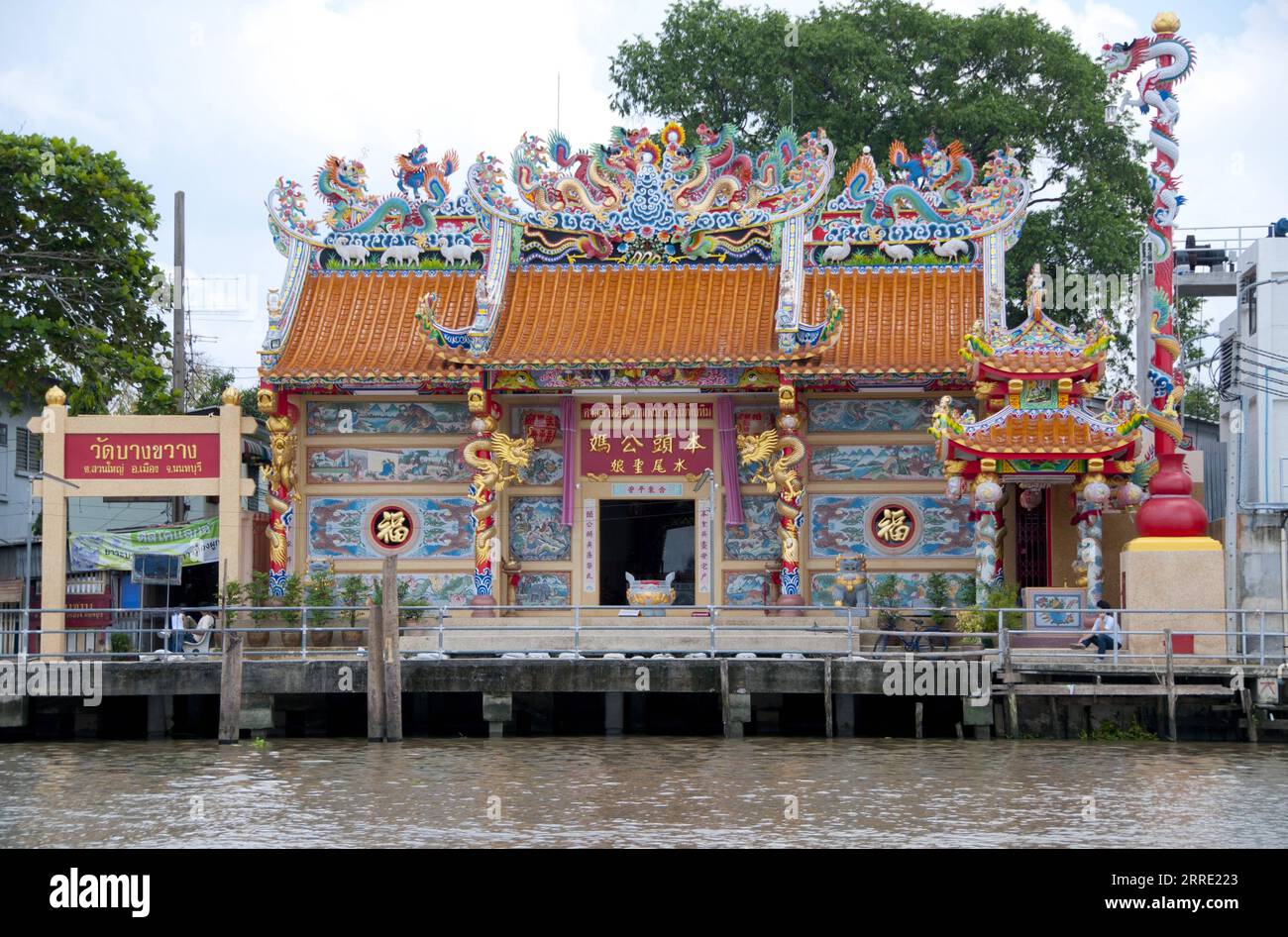 By the 19th century, with the introduction of cheap steamship travel and declining conditions in China itself, a steady trickle of Chinese migrants to Thailand became a flood. Chinese coolies from the Chinese ku-li, or bitter labour sought new lives and a higher standard of living throughout Southeast Asia and beyond - even in distant California, Southern Africa and South America. It is from this time that the term Overseas Chinese becomes common, though in the case of Thailand, Burma, Laos and Vietnam it is misleading. Here there are many Overland Chinese as well.br/br/ As a result of this g Stock Photohttps://www.alamy.com/image-license-details/?v=1https://www.alamy.com/by-the-19th-century-with-the-introduction-of-cheap-steamship-travel-and-declining-conditions-in-china-itself-a-steady-trickle-of-chinese-migrants-to-thailand-became-a-flood-chinese-coolies-from-the-chinese-ku-li-or-bitter-labour-sought-new-lives-and-a-higher-standard-of-living-throughout-southeast-asia-and-beyond-even-in-distant-california-southern-africa-and-south-america-it-is-from-this-time-that-the-term-overseas-chinese-becomes-common-though-in-the-case-of-thailand-burma-laos-and-vietnam-it-is-misleading-here-there-are-many-overland-chinese-as-wellbrbr-as-a-result-of-this-g-image565177819.html
By the 19th century, with the introduction of cheap steamship travel and declining conditions in China itself, a steady trickle of Chinese migrants to Thailand became a flood. Chinese coolies from the Chinese ku-li, or bitter labour sought new lives and a higher standard of living throughout Southeast Asia and beyond - even in distant California, Southern Africa and South America. It is from this time that the term Overseas Chinese becomes common, though in the case of Thailand, Burma, Laos and Vietnam it is misleading. Here there are many Overland Chinese as well.br/br/ As a result of this g Stock Photohttps://www.alamy.com/image-license-details/?v=1https://www.alamy.com/by-the-19th-century-with-the-introduction-of-cheap-steamship-travel-and-declining-conditions-in-china-itself-a-steady-trickle-of-chinese-migrants-to-thailand-became-a-flood-chinese-coolies-from-the-chinese-ku-li-or-bitter-labour-sought-new-lives-and-a-higher-standard-of-living-throughout-southeast-asia-and-beyond-even-in-distant-california-southern-africa-and-south-america-it-is-from-this-time-that-the-term-overseas-chinese-becomes-common-though-in-the-case-of-thailand-burma-laos-and-vietnam-it-is-misleading-here-there-are-many-overland-chinese-as-wellbrbr-as-a-result-of-this-g-image565177819.htmlRM2RRE223–By the 19th century, with the introduction of cheap steamship travel and declining conditions in China itself, a steady trickle of Chinese migrants to Thailand became a flood. Chinese coolies from the Chinese ku-li, or bitter labour sought new lives and a higher standard of living throughout Southeast Asia and beyond - even in distant California, Southern Africa and South America. It is from this time that the term Overseas Chinese becomes common, though in the case of Thailand, Burma, Laos and Vietnam it is misleading. Here there are many Overland Chinese as well.br/br/ As a result of this g
 War in South Africa and the Dark continent from savagery to civilization : The strange story of a weird world from the earliest ages to the present, including the war with the Boers .. . ether the memorialists were Englishmen or Coolies, and by thechallenge of another member, M. Otto, to the Outlanders to fight fortheir rights if they dared. It is only fair to add that other membersof the first Raad rebuked the language of M. Otto, and that a commit-tee was appointed to investigate the question. It was, however, acommittee appointed to do nothing, and, rightly or wrongly, the Out-lander commun Stock Photohttps://www.alamy.com/image-license-details/?v=1https://www.alamy.com/war-in-south-africa-and-the-dark-continent-from-savagery-to-civilization-the-strange-story-of-a-weird-world-from-the-earliest-ages-to-the-present-including-the-war-with-the-boers-ether-the-memorialists-were-englishmen-or-coolies-and-by-thechallenge-of-another-member-m-otto-to-the-outlanders-to-fight-fortheir-rights-if-they-dared-it-is-only-fair-to-add-that-other-membersof-the-first-raad-rebuked-the-language-of-m-otto-and-that-a-commit-tee-was-appointed-to-investigate-the-question-it-was-however-acommittee-appointed-to-do-nothing-and-rightly-or-wrongly-the-out-lander-commun-image339243625.html
War in South Africa and the Dark continent from savagery to civilization : The strange story of a weird world from the earliest ages to the present, including the war with the Boers .. . ether the memorialists were Englishmen or Coolies, and by thechallenge of another member, M. Otto, to the Outlanders to fight fortheir rights if they dared. It is only fair to add that other membersof the first Raad rebuked the language of M. Otto, and that a commit-tee was appointed to investigate the question. It was, however, acommittee appointed to do nothing, and, rightly or wrongly, the Out-lander commun Stock Photohttps://www.alamy.com/image-license-details/?v=1https://www.alamy.com/war-in-south-africa-and-the-dark-continent-from-savagery-to-civilization-the-strange-story-of-a-weird-world-from-the-earliest-ages-to-the-present-including-the-war-with-the-boers-ether-the-memorialists-were-englishmen-or-coolies-and-by-thechallenge-of-another-member-m-otto-to-the-outlanders-to-fight-fortheir-rights-if-they-dared-it-is-only-fair-to-add-that-other-membersof-the-first-raad-rebuked-the-language-of-m-otto-and-that-a-commit-tee-was-appointed-to-investigate-the-question-it-was-however-acommittee-appointed-to-do-nothing-and-rightly-or-wrongly-the-out-lander-commun-image339243625.htmlRM2AKWTKN–War in South Africa and the Dark continent from savagery to civilization : The strange story of a weird world from the earliest ages to the present, including the war with the Boers .. . ether the memorialists were Englishmen or Coolies, and by thechallenge of another member, M. Otto, to the Outlanders to fight fortheir rights if they dared. It is only fair to add that other membersof the first Raad rebuked the language of M. Otto, and that a commit-tee was appointed to investigate the question. It was, however, acommittee appointed to do nothing, and, rightly or wrongly, the Out-lander commun
 Chinese Mining Boy, South Africa Stock Photohttps://www.alamy.com/image-license-details/?v=1https://www.alamy.com/stock-photo-chinese-mining-boy-south-africa-105386450.html
Chinese Mining Boy, South Africa Stock Photohttps://www.alamy.com/image-license-details/?v=1https://www.alamy.com/stock-photo-chinese-mining-boy-south-africa-105386450.htmlRMG3CNDP–Chinese Mining Boy, South Africa
 Police in Chinese Compound, South Africa - contracted miners Stock Photohttps://www.alamy.com/image-license-details/?v=1https://www.alamy.com/stock-photo-police-in-chinese-compound-south-africa-contracted-miners-105374517.html
Police in Chinese Compound, South Africa - contracted miners Stock Photohttps://www.alamy.com/image-license-details/?v=1https://www.alamy.com/stock-photo-police-in-chinese-compound-south-africa-contracted-miners-105374517.htmlRMG3C67H–Police in Chinese Compound, South Africa - contracted miners
 Coolies ( Indians) working on a tea plantation in Natal, South Africa picking tea 1913 Stock Photohttps://www.alamy.com/image-license-details/?v=1https://www.alamy.com/coolies-indians-working-on-a-tea-plantation-in-natal-south-africa-picking-tea-1913-image624209692.html
Coolies ( Indians) working on a tea plantation in Natal, South Africa picking tea 1913 Stock Photohttps://www.alamy.com/image-license-details/?v=1https://www.alamy.com/coolies-indians-working-on-a-tea-plantation-in-natal-south-africa-picking-tea-1913-image624209692.htmlRM2Y7F5R8–Coolies ( Indians) working on a tea plantation in Natal, South Africa picking tea 1913
 Three Chinese 'Mining Boys'. Between 1904 and 1910, over 63,000 contracted miners were brought in to work the mines of the Witwatersrand. Most of these contractors were recruited from the provinces of Chihli (Zhili), Shantung (Shandong) and Honan (Henan) Stock Photohttps://www.alamy.com/image-license-details/?v=1https://www.alamy.com/stock-photo-three-chinese-mining-boys-between-1904-and-1910-over-63000-contracted-105386431.html
Three Chinese 'Mining Boys'. Between 1904 and 1910, over 63,000 contracted miners were brought in to work the mines of the Witwatersrand. Most of these contractors were recruited from the provinces of Chihli (Zhili), Shantung (Shandong) and Honan (Henan) Stock Photohttps://www.alamy.com/image-license-details/?v=1https://www.alamy.com/stock-photo-three-chinese-mining-boys-between-1904-and-1910-over-63000-contracted-105386431.htmlRMG3CND3–Three Chinese 'Mining Boys'. Between 1904 and 1910, over 63,000 contracted miners were brought in to work the mines of the Witwatersrand. Most of these contractors were recruited from the provinces of Chihli (Zhili), Shantung (Shandong) and Honan (Henan)